Dyson Air Purifiers
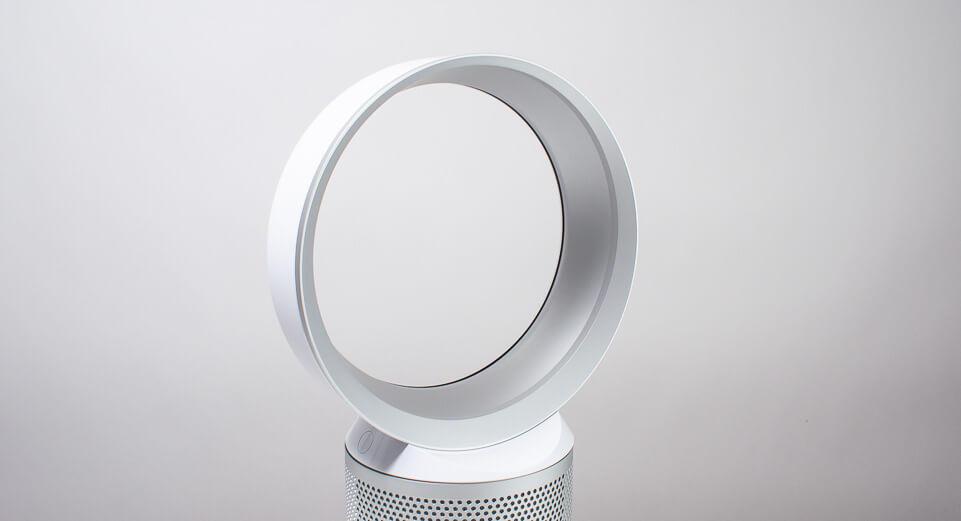
Model Comparisons
All Dyson purifiers either
- have a hoop at the top (TP, HP, and PH series models) or
- are Big+Quiet (BP series models)
We can also categorize Dyson purifiers like this:
-
Dysons with a hoop at the top
-
Purifier Cool (air purifier + fan)
Purifier Cool Gen1 (TP10) is the base model. It doesn't have app or voice control.
Purifier Cool (TP07) adds app and voice control.
Purifier Cool Formadehyde (TP09) adds app and voice control and a catalytic filter that traps formaldehyde.
-
Purifier Hot+Cool (air purifier + heater + fan)
Purifier Hot+Cool Gen1 (HP10) is the base model. It doesn't have app or voice control.
Purifier Hot+Cool (HP07) adds app and voice control.
Purifier Hot+Cool Formaldehyde (HP09) adds app and voice control and a catalytic filter that traps formaldehyde.
-
Purifier Humidify+Cool (air purifier + humidifier + fan)
Purifier Humidify+Cool (PH03) is the base model. It doesn't have a catalytic filter.
Purifier Humidify+Cool Formaldehyde (PH04) adds a catalytic filter that traps formaldehyde.
-
-
Big+quiet Dysons (air purifier + fan)
Purifier Big+Quiet Formaldehyde (BP06) is the base model. It has limited sensors (it only displays CO2 levels). And it doesn't have app or voice control.
Purifier Big+Quiet Formaldehyde (BP03) adds many more sensors and app and voice control.
Purifier Big+Quiet Formaldehyde (BP04) does as well, and also adds additional media to its gas filter to capture NO2. Otherwise, these models are mostly identical.
Dyson Purifier Anatomy
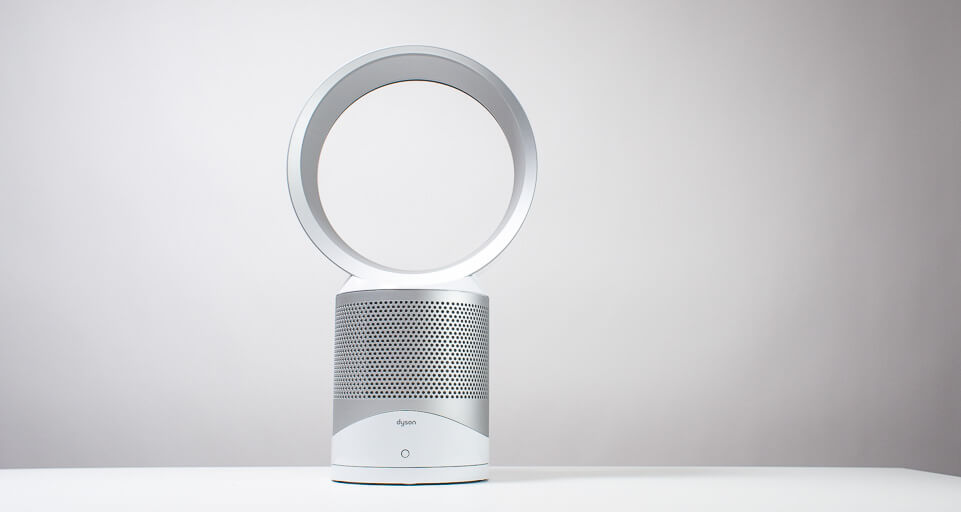








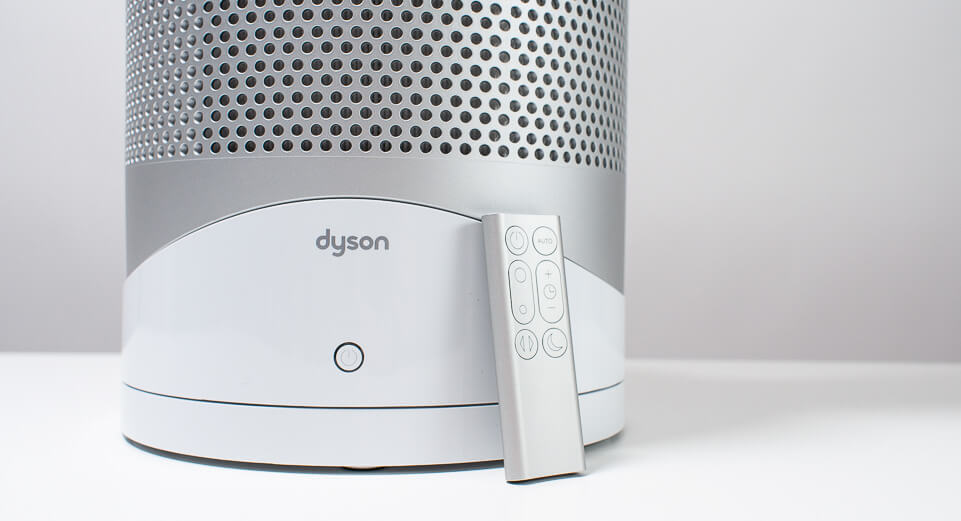







Advantages of Dyson Air Purifiers
1. Dysons project air very well
Dyson purifiers with a hoop at the top feature “air multiplier technology” which is the same technology used in Dyson fans.
This "technology" involves forcing air through a small opening or slot around the hoop that's perched on top of the air purifier.
There's still an impeller (fan) pulling air in and through the base of the unit, past all of its filters, just like every other air purifier. But once the air goes past the impeller, it goes through a small opening around the hoop above the unit.
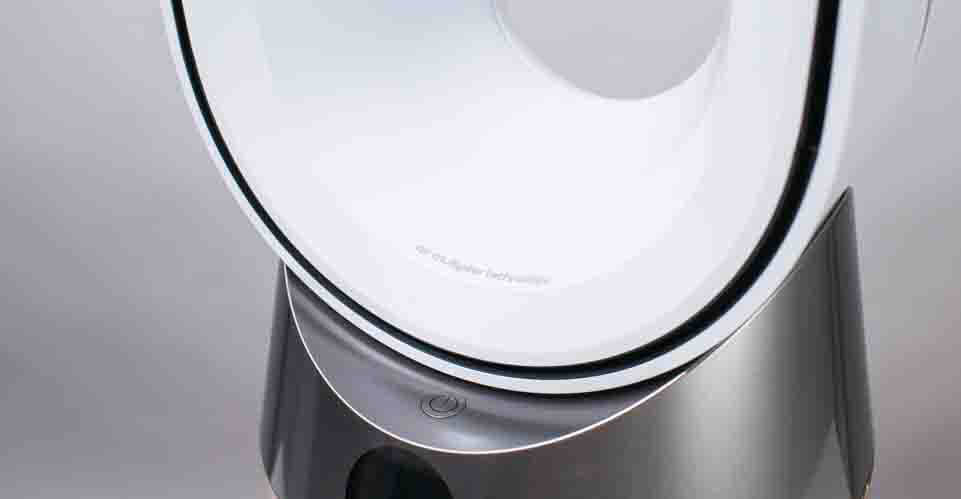
Pushing even a low volume of air through this small opening creates an area of low pressure, which pulls a much larger volume of air from behind the hoop, through the hoop. This essentially multiplies the volume of air the air purifier projects throughout the room.
Note that the majority of the air a Dyson purifier with a hoop projects is unpurified air (air that it pulls from behind the hoop and through it). Only a small fraction of the projected air is clean processed air (air that it pulls through its filters and through the small opening around the hoop).
Dyson Big+Quiet models use cone aerodynamics to only project purified air. They don't project as large of a volume of air as Dysons with a hoop at the top, but all of the air they project is purified air, and they're still able to project it far (up to 32 ft.) away from the air purifier.
2. Dysons allow you to control the direction of their airflow
Dyson purifiers also uniquely offer directional airflow that you can control, because air is exhausted out of them in a forward direction. On most competitors air is exhausted in an upward direction with no directional control.
Dyson purifiers with a hoop at the top can be set to automatically oscillate back and forth on the x-axis. That is to say, they can be set to oscillate left to right. They can also physically be pushed to tilt up or down
Big+Quiet models don't oscillate or tilt but you can set them to project air at three different vertical angles - at 0°, 25°, or 50°.
Most other air purifiers on the market do not offer this functionality as they are primarily air purifiers (not multipurpose appliances that can double as fans like Dysons) and air direction has little to no impact on air purification.
3. Dysons can be used as multipurpose appliances
a. operating these units on their standard air cleaning modes provides a cooling effect giving these units the ability to double as fans.
Note that Dyson air purifiers that "cool" are not air conditioners. The cooling effect is solely provided by the airflow out of the unit (working like a fan).
b. " Hot + Cool" units can also heat the air they process
Most other air purifiers on the market do not offer this functionality. They only clean the air. They cannot cool or heat it.
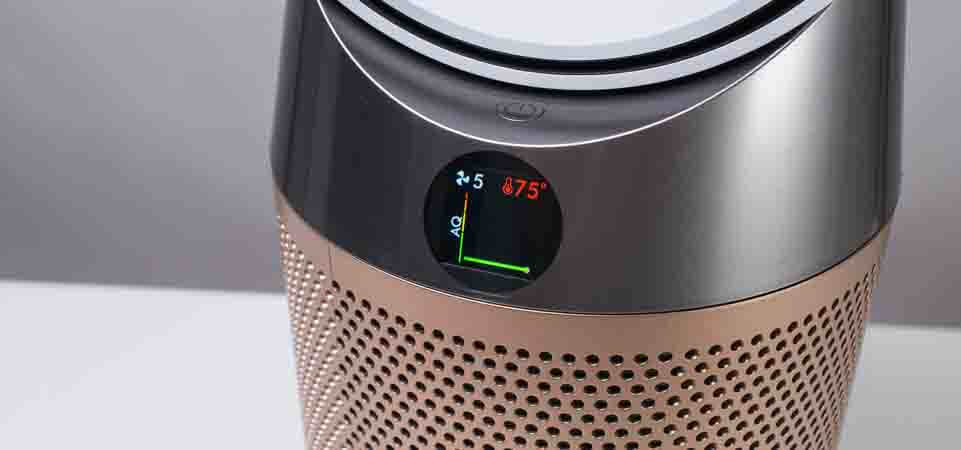
c. "Humidify" units can also humidify the air they process
Again, most other air purifiers on the market do not offer this functionality.
4. Dysons can filter formaldehyde
Dyson air purifiers with "Formaldehyde" in their model name (e.g. the "Purifier Cool Formaldehyde" and the "Big+Quiet Formaldehyde) come equipped with catalytic filters. These filters target and destroy formaldehyde. They are also permanent filters that don't need to be replaced at cost.
Most other air purifiers on the market only come equipped with carbon filters. Carbon filters most unwanted gases - most harmful VOCs and odors - very well. But it has trouble filtering certain lower molecular weight chemicals like formaldehyde.
"Formaldehyde" Dyson air purifiers uniquely provide filtration for this particular chemical with their catalytic filters.
If you have an issue with formaldyde we recommend removing the source of the formaldehyde and/or ventilating - i.e. opening windows to bring in fresh air and ventilate out unclean air - instead of trying to fix the issue with an air purifier. However, if you want to or absolutely need to remove formaldehyde using an air purifier, "Formaldehyde" Dyson air purifiers can handle this task for you.
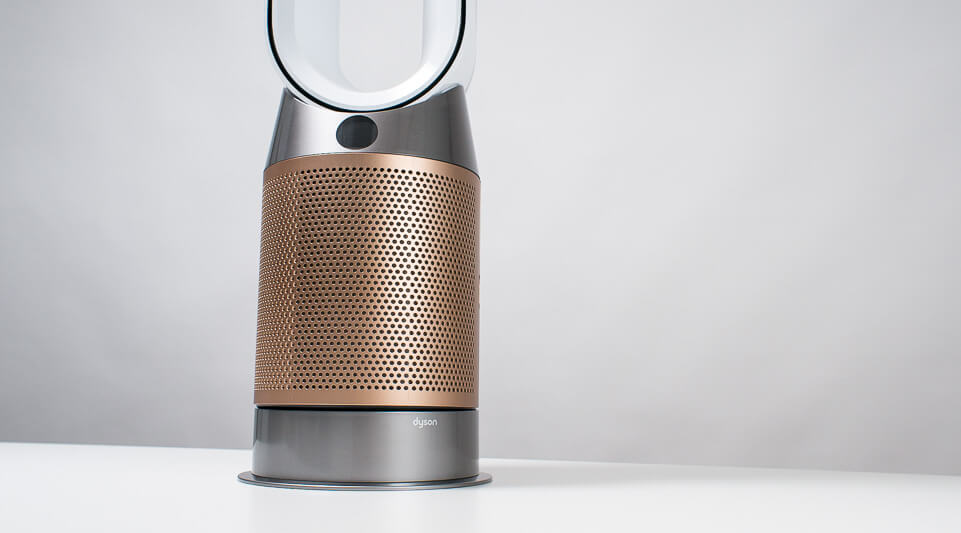




5. Dysons are smart
Most Dyson units provide
- App support – this allows you to monitor and control the unit with an app on your phone
- Voice control as well
There are several other air purifiers on the market that also offer this functionality. However, it is especially well implemented in Dyson units. It’s clear from Dyson’s marketing that it’s a priority for them to synonymize their brand with the idea that their appliances are made with an emphasis on cutting edge technology. Thus, smart functionality is a priority for them. And it shows when you use their app to control their appliances. The user interface is well laid out, everything works, and it works really well.
6. Dysons provide easy control and fine tuning
a. easy control
- Most models provide full app control via wifi (discussed above).
- And all of them come with a remote control (with lots of buttons).
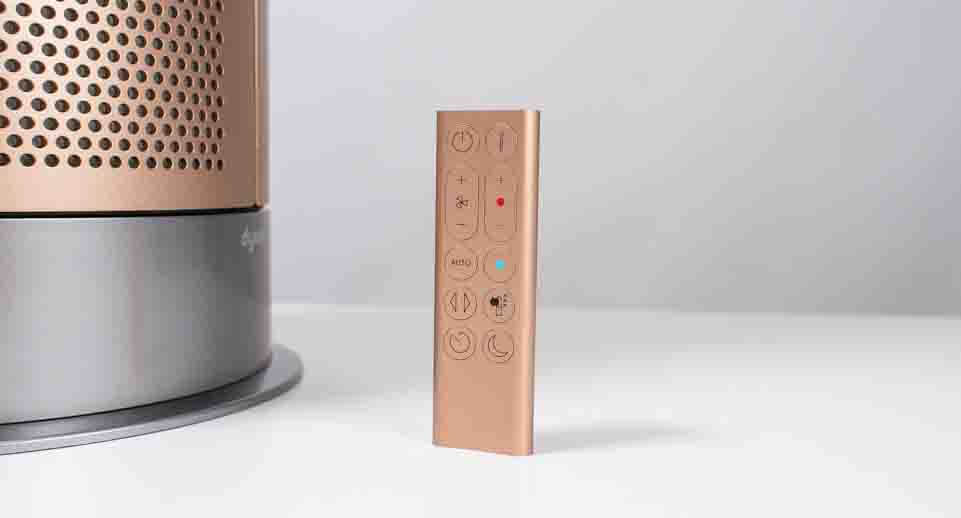
Most other air purifiers on the market either do not have a remote control or if they do, have a very limited remote control – with only a few buttons. You can control absolutely everything there is to control – fan speed, auto modes, etc. - with the remote control included with a Dyson air purifier. The remote control for these units also snaps to top of unit (magnetically) for easy storage.
b. fine tuning
- All Dysons have 10 fan speeds.
Most other air purifiers feature 3 or 4 fan speeds at most. We certainly appreciate the extra control this provides; however, the truth is that in practice, you’re likely to use only 2 or 3 fan speeds at most – one for when you want the unit to operate as quietly as possible (a low fan speed) and one for when you want the unit to clean the air as quickly as possible (the highest fan speed).
- Most Dysons feature an auto mode and/or a night mode.
These are not features unique to Dyson air purifiers but they are nice to have nonetheless.
We generally do not recommend running any air purifier on auto mode. The air quality sensor installed on most air purifiers (including Dysons) does not offer the necessary accuracy or precision to properly control the cleaning level (i.e. fan speed) for regular everyday use. We therefore recommend that you run the unit on a consistent manual fan speed if you can. For more information on this topic see here.
The night mode on Dyson units works relatively well – it essentially shuts off the LED display. However, it is itself an automatic mode. And again, we do not recommend running these units on any auto mode, but rather that you set fan speed manually.
7. Dysons look great
There’s no denying that Dyson air purifiers have a very clean modern aesthetic. They really are great looking appliances. The same cannot be said for many other air purifiers on the market.
Disadvantages of Dyson air purifiers
1. Their low purified airflow
Earlier we talked about how Dysons project air very well. However, air projection has little to no impact on the actual air purification process.
Ultimately, you’re buying an air purifier to lower the particle concentration in a particular room as quickly as possible. And the rate at which the overall particle concentration in a room is lowered is directly proportional to the rate at which an air purifier can take unclean air, process it through its filters, and output clean air.
The rate at which an air purifier can do this is determined by
- the quality of the filters and the
- volume of air processed through the filters per unit time (CFM)
When it comes to filters, Dyson units do just fine. They’re equipped with HEPA and carbon filters. HEPA is the industry standard for particle filtration and carbon is the standard for gas filtration.
Here’s the problem: in terms of volume of processed air per minute (CFM), Dyson units do quite poorly.
Dysons with a hoop at the top project a high volume of air, but the majority of the air they project is unpurified air. Only a small fraction of the projected air is clean processed air.
These Dysons have an effective purified airflow right around or below 100 CFM (Cubic Feet per Minute).
100 CFM is a very low purified airflow. For comparison, a relatively small standard air purifier like the GermGuardian AC4825 has a purified airflow of around 130 CFM.
What does all of this mean in practice? What this means is that Dysons with a hoop at the top cannot be used in rooms much larger than 100 to 150 sq. ft. Anything larger than that and they will not be able to effectively lower particle concentration in the room.
And keep in mind that in such a room – a small room under 150 sq. ft. - they need to be run on maximum fan speed to be effective. For the Dyson Hot+Cool Formaldehyde, for example, that’s fan speed 10 with a noise output of approx. 59 dB and a power draw of approx. 23 watts. For comparison, the top rated Winix 5500-2 outputs at slightly more than 100 CFM on a medium setting (it outputs at 250 CFM on its highest fan speed) where it makes less than 50 dB of noise and draws less than 10 watts of power.
If you were to run the same Dyson air purifier on a lower setting than max – let’s say, fan speed 7 or 5 – it would not be able to lower particle concentration effectively in even a small 100 sq. ft. room. What do we mean by “effectively”? It would not be able to lower particle concentration in the room fast enough to maintain a particle concentration less than what you could accomplish with an HVAC system equipped with a good filter. And if you’re going through all the trouble of buying an air purifier to begin with, you certainly want your air purifier to perform better than your HVAC system in cleaning the air in your home.
What about Big+Quiet models?
Big+quiet Dysons have an effective purified airflow right around or below 200 CFM (Cubic Feet per Minute). This is double the airflow of Dysons with a hoop at the top, but still less airflow than that of most other air purifiers we've tested.
2. Dysons are a poor value
The least expensive Dysons with a hoop at the top retail in the $300 to $400 range. The most expensive models are upwards of $1,000 (the PH04 retails for $1,000).
What does all of that buy you? For these Dysons, it buys you the effective air purification (purified airflow) of a standard air purifier in the $80 to $100 range. Recall the GermGuardian AC4825 we referenced earlier. The AC4825 also has a HEPA and carbon filter and it offers even more purified airflow than Dysons with a hoop at the top. The best part? It retails for about $80 – a fraction of the price of even the cheapest Dyson with a hoop at the top.
Big+quiet Dysons retail for between $900 and $1,100.
Air purifers with comparable airflow and filtration to Big+Quiet models retail in the $120 to $200 price range. The Winix 5500-2, for example, retails for about $160. It's more than FIVE times cheaper than the cheapest Big+Quiet Dyson and has
- a good quality pre-filter (Big+Quiet Dysons don't have any pre-filter)
- a HEPA filter (just like Dysons)
- a carbon filter (just like Dysons)
- and even more airflow - 250 CFM of purified airflow vs 200 CFM for Big+Quiet Dysons
Replacement filters for standard air purifiers are also cheaper. They usually cost under $50. Replacement filters for Dysons with a hoop at the top usually cost at least $70. Big+Quiet Dyson filters have a yearly cost of $79 (their HEPA filters can be replaced every 5 years at $170 and their carbon filters can be replaced every two years at $90 which equates to a yearly cost of $79).
The bottom line: if you’re strictly looking for an air purifier (and not an appliance that also cools, heats, or humidifies) – Dyson air purifiers are a really poor value.
Recommendation
So what is our general recommendation when it comes to Dyson air purifiers? It’s this:
Look into purchasing a Dyson air purifier if you value
- Its ability to be used as a multipurpose appliance – i.e. you also want to use it as a fan, heater, or humidifier
- Its ability to filter formaldehyde (only applies to certain models)
- Its smart features – Dyson app and voice control
- Its aesthetics
If you don’t care for these things, we recommend you buy a standard run-of-the-mill air purifier instead.
Specifically, we recommend a top rated 250 CFM unit like the Winix 5500-2 or Coway Mighty.
These top rated units
- Filter particles just as well – with HEPA filters
- Filter most VOCs and odors just as well – with carbon filters
- And even add better quality pre-filtration
They also have more airflow (even more than Big+quiet Dysons) and retail for a fraction of the price.
Add a Comment
Have a question or comment? Let us know below.

Comments